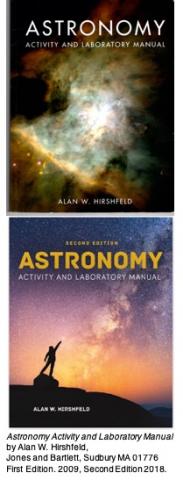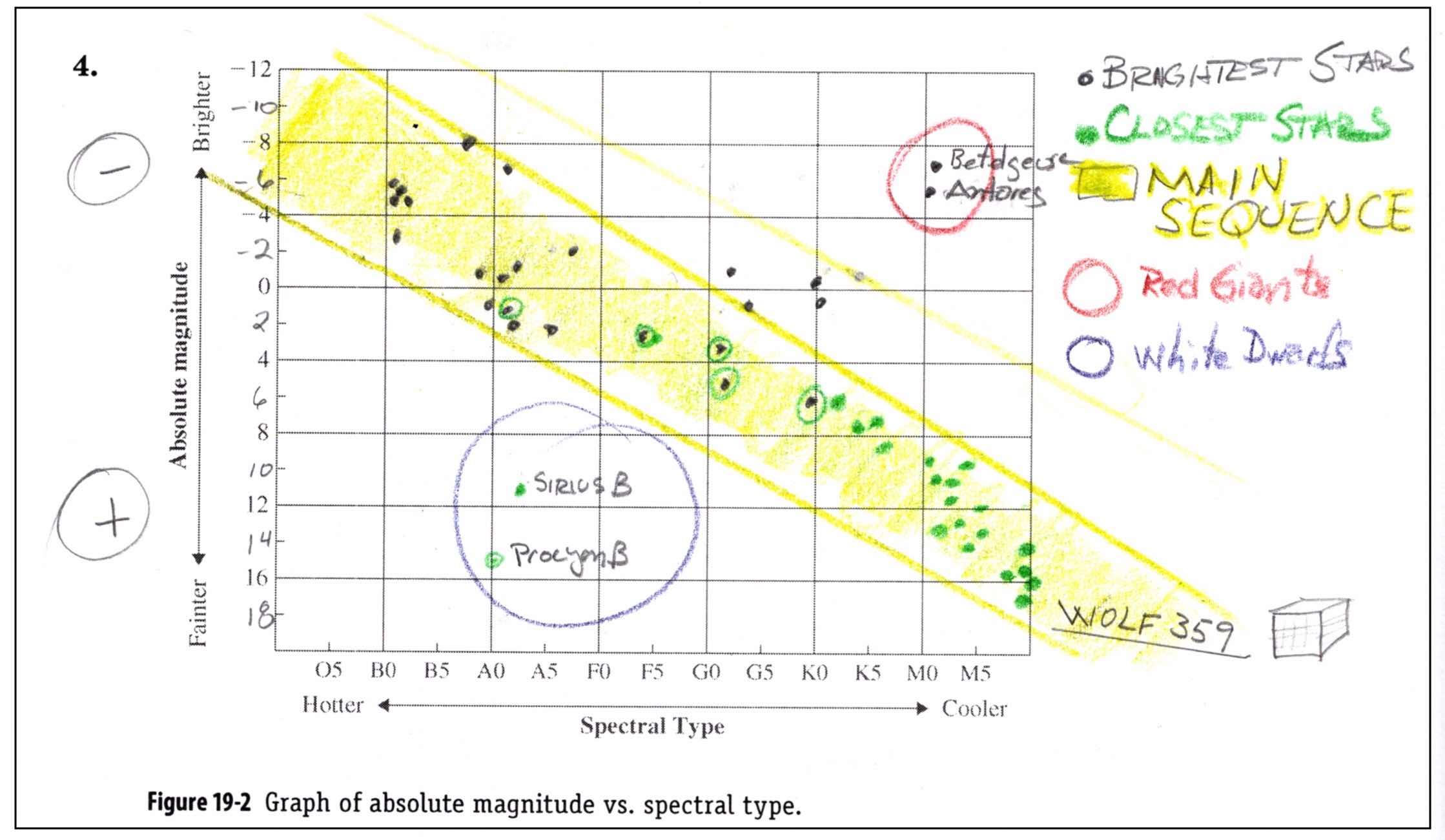› Forums › General Discussion › Hirshfeld’s “Activity and Laboratory Manual”
- This topic has 1 reply, 1 voice, and was last updated 4 years, 12 months ago by
 Michael E. Marotta.
Michael E. Marotta.
-
AuthorPosts
-
12 December 2020 at 7:19 pm #574826
 Michael E. MarottaParticipant
Michael E. MarottaParticipantThe stars are pretty at any magnification. It is most important to understand what you are looking at. Following these structured exercises, I gained an intuitive understanding of how astronomy developed historically, and (more importantly) of my location in the universe. This guide to hands-on learning instilled me with a sense of confidence about my ability to perform the basic mathematics of astronomy.
Astronomy Activity and Laboratory Manual by Alan W. Hirshfeld, Jones and Bartlett Publishers, Sudbury MA 01776, First Edition. 2009, Second Edition 2018.
Even if you are completely math-phobic, you can still get a lot out this by at least reading through the exercises to appreciate how the Greeks, Galileo, Kepler, Newton, and the astronomers of the 19th and 20thcenturies came to their conclusions. If all of the arithmetic and algebra is “digital” then “Activity 15: Picturing the Universe—How Photography Revolutionized Astronomy” is “analog.”
The exercises start with measuring shadows to track the sun as evidenced by megaliths such as Stonehenge. Before the last activity, you estimate the expansion rate of the universe according to Hubble’s Law. The learning does not end there. Prof. Hirshfeld is a good instructor, and the assignments come full circle. Having started with the Sun and Moon, the book ends by assigning the calculations to estimate the relative masses of Sirius and its dwarf companion. (Just to note: This is from the first edition of the book (2009); the second edition (2018) is a bit different; and a third edition is promised, but not in process.)
It starts with the gnomon, basically a vertical stick in the ground. At the end of the shadow, you place a stone. In Chapter 2, several thousand years or generations later, your mathematics has been developed enough to derive the angle of the Sun in the sky at mid-day from the length of the shadow relative to the height of the stick. Theta equals arctan(L over H).
Hirshfeld provides good, simple explanations of the mathematics, mostly first year high school algebra, though not in depth. At the back of the book is a tutorial on basic trigonometry. But in the workbook, Hirshfeld just gives you the number 57.3 without telling you where it came from. Similarly, it is true that although you do not need much mathematics to benefit from the hands-on calculations, you do need some.
The value is in the spiral approach to learning: you work through concepts that you will come back to again. The same basic formulas are applied repeatedly to new problems from measuring the diameter of the Earth to measuring the distances to the Moon and Sun and then to the stars.
I put off the central activity of “Activity 12: Parallax” until I finished the rest of the book. I could have just worked through it on paper, but I wanted to set up a yardstick in the doorway between the kitchen and the living room in order to take my own measurements. Alan Hirshfeld is the author of Parallax: The Race to Measure the Cosmos; W. H. Freeman & Co., 2001, (reviewed here on Cloudy Nights.) So, I wanted to give him his due and take my time with the work before reading that book.

In the second edition, Activity 19 covers the Hertzsprung-Russell Diagram and the relationships between spectral types and luminosities. The second edition also replaced the work on plotting the orbit of Sirius B around Sirius A with a your own reflective essay. I believe that was a loss.
Although I have a calculator on my iPhone and my computer, I bought a new one just for this, a basic scientific TI-30Xa. It was $8.95 which is like 89 cents in 1978 dollars when we bought our first TI-30 calculators. The universe may not be expanding, but the money supply is. Still, I worked several of these in my head by approximation, 3 for pi and so on.
Table of Contents (Second Edition)
Activity 1 The World’s First Skywatcher – YOU!
Activity 2 Shadowland
Activity 3 Shadowland – the Sequel
Activity 4 Shadowland Follow-up
Activity 5 The Phases of the Moon
Activity 6 Eratosthenes Measures the Earth
Activity 7 Aristarchus Measures the Size and Distance of the Moon
Activity 8 Aristarchus Measures the Size and Distance of the Sun
Activity 9 The Copernican Cosmos
Activity 10 Kepler’s Third Law
Activity 11 Isaac Newton and the Moon
Activity 12 Galileo Measures a Mountain – on the Moon!
Activity 13 Precision Astronomy After Galileo – Stellar Aberration
Activity 14 Precision Astronomy After Galileo – Stellar Parallax
Activity 15 Picturing the Universe – How Photography Revolutionized Astronomy
Activity 16 How Bright is That Star? A Tutorial on the Magnitude System
Activity 17 The Realm of the Spiral Nebulae
Activity 18 Hubble’s Law – in the Kitchen and in the Universe
Activity 19 The Herzsprung-Russell Diagram
Activity 20 Binary Stars and Stellar Motions.
Appendix Mathbits
Attachments:
12 December 2020 at 7:28 pm #583550 Michael E. MarottaParticipant
Michael E. MarottaParticipantThe author has no plans now for a 3rd edition.
-
AuthorPosts
- You must be logged in to reply to this topic.

